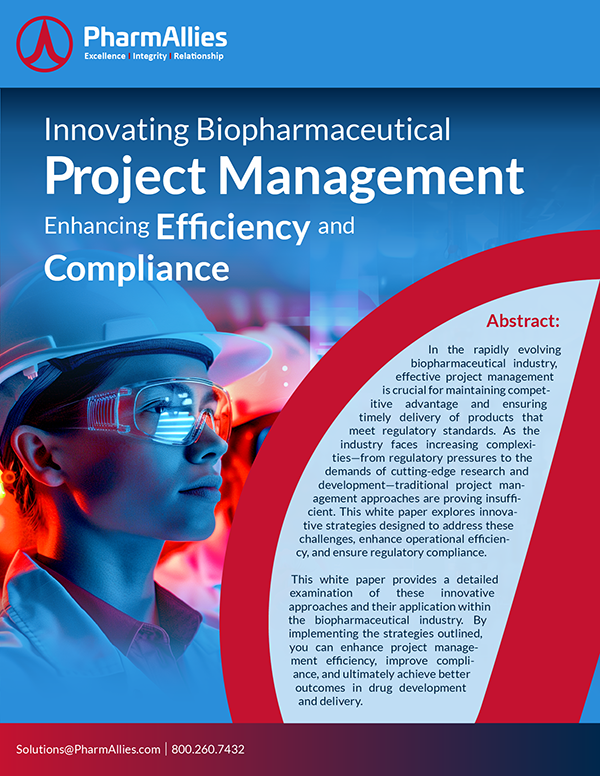How Agile and Lean Are Transforming Biopharmaceutical Projects
Introduction
In the ever-evolving biopharmaceutical industry, the ability to adapt and innovate quickly is crucial. Traditional project management methodologies, while effective in many ways, often struggle to keep pace with the dynamic and complex nature of biopharmaceutical projects. This is where Agile and Lean methodologies come into play. These advanced approaches, initially popularized in the tech world, are now being adopted in biopharmaceutical project management, offering a new way to handle the challenges of this fast-paced industry.
Throughout my career, I’ve seen firsthand how adopting Agile and Lean methodologies can revolutionize project management in biopharma. With over 20 years of experience and certifications like PMP and CSSBB, I’ve guided teams through the transition from traditional methods to these more adaptive approaches. In this article, I’ll share insights into how Agile and Lean are transforming biopharmaceutical projects and how you can apply these methodologies to your work.
The Need for Flexibility in Biopharmaceutical Projects
Why Traditional Methods Fall Short
In the biopharmaceutical industry, projects are often long, complex, and subject to numerous uncertainties. Traditional project management methodologies, like Waterfall, are linear and rigid, making them less suitable for projects where requirements frequently change or where the end goals evolve as the project progresses. I’ve been involved in projects where sticking to a rigid plan led to significant delays and missed opportunities, especially when unexpected challenges arose during manufacturing or validation stages.
For instance, during one major project involving the validation of a new manufacturing facility, we encountered unforeseen issues that required immediate changes to our approach. The rigidity of our initial project plan left little room for flexibility, leading to delays that could have been avoided with a more adaptable methodology.
The Agile and Lean Advantage
Agile and Lean methodologies offer a more flexible, iterative approach. Instead of following a strict, predefined path, these methods emphasize continuous improvement, adaptability, and customer (or in this case, patient) focus. This makes them particularly well-suited to the biopharmaceutical industry, where the ability to pivot quickly in response to new data or regulatory feedback can make all the difference.
Understanding Agile in Biopharma
What is Agile?
Agile is a project management methodology that emphasizes flexibility, collaboration, and iterative progress. Unlike traditional methods, which plan out the entire project from the start, Agile breaks projects into smaller, manageable phases called “sprints.” Each sprint focuses on delivering a specific piece of the project, with continuous feedback loops that allow for adjustments along the way.
In my experience, Agile has been incredibly effective in managing the unpredictable nature of biopharmaceutical projects. For example, in a project where we were developing a new drug and establishing the associated manufacturing processes, the Agile approach allowed us to quickly adapt to unexpected results in early-stage trials without derailing the entire project timeline. We were able to iterate rapidly, testing and refining our approach in real-time.
Key Agile Principles in Biopharma
- Iterative Development: In biopharma, iterative development means breaking down complex tasks—like clinical trial phases or manufacturing validations—into smaller, more manageable parts. This allows for continuous testing and validation, reducing the risk of major issues arising late in the project.
- Collaboration and Communication: Agile emphasizes the importance of cross-functional teams working closely together. In biopharma, this means bringing together scientists, clinicians, regulatory experts, and project managers to collaborate more effectively. I’ve seen how this approach leads to better alignment and faster problem-solving, particularly in projects where cross-departmental collaboration is key.
- Flexibility and Responsiveness: Perhaps the most significant benefit of Agile is its flexibility. In biopharma, where new data can significantly impact a project’s direction, the ability to pivot quickly is invaluable. Agile allows teams to respond to changes without the need for lengthy re-planning.
Applying Agile to Your Projects
Transitioning to Agile can be challenging, especially in an industry as regulated as biopharma. However, in my experience, starting small—by applying Agile principles to one aspect of a project, such as the early stages of clinical trials or the initial phases of a new manufacturing process—can demonstrate the value of the approach and make the case for broader adoption.
For example, in one project, we introduced Agile to the clinical operations team managing a new drug’s clinical trials. By breaking down the trial process into sprints, we were able to identify and address issues more quickly, improving the overall efficiency of the trial. This success led to the wider adoption of Agile practices across other teams, eventually transforming how we managed the entire project.
Embracing Lean in Biopharma
What is Lean?
Lean is a methodology focused on maximizing value while minimizing waste. Originating from manufacturing, Lean principles have been adapted for various industries, including biopharmaceuticals. In Lean, “waste” refers to anything that doesn’t add value to the end product, in this case, the therapeutic benefit to the patient.
In biopharma, Lean methodologies can help streamline processes, reduce costs, and accelerate time-to-market. I’ve used Lean principles to cut down on inefficiencies in project workflows, leading to faster and more cost-effective outcomes, particularly in areas like GMP manufacturing and packaging.
Key Lean Principles in Biopharma
- Value Stream Mapping: This involves mapping out the entire process from drug discovery to market, identifying areas where waste can be eliminated. In one project, we used value stream mapping to streamline the handover process between R&D and manufacturing, reducing delays and improving communication. This was particularly beneficial in ensuring that the transition from research to production was as seamless as possible, which is critical in GMP environments.
- Continuous Improvement (Kaizen): Lean emphasizes the importance of continuous improvement. In biopharma, this means regularly reviewing and refining processes to enhance efficiency and quality. I’ve found that creating a culture where team members are encouraged to suggest improvements leads to significant gains in both productivity and morale. For example, during a large-scale serialization and aggregation implementation, our focus on continuous improvement helped us identify and eliminate bottlenecks in the packaging process, significantly reducing turnaround times.
- Reducing Bottlenecks: In any complex process, bottlenecks can slow down progress. Lean methodologies focus on identifying and eliminating these bottlenecks to keep projects moving smoothly. In my experience, applying Lean principles to areas like regulatory submissions or equipment validation has helped reduce delays and improve overall project timelines.
Applying Lean to Your Projects
Implementing Lean in biopharma requires a mindset shift. It’s about constantly looking for ways to do things better and more efficiently. One of the most effective ways I’ve found to introduce Lean is through pilot projects. Start by applying Lean principles to a single process, such as reducing turnaround time for data review and analysis, and measure the results. Success in these small-scale projects can then pave the way for broader Lean adoption.
For example, in one project, we applied Lean principles to the laboratory system protocol development process. By streamlining the review and approval stages, we reduced the time it took to finalize protocols, enabling us to start validation sooner and stay ahead of schedule. This was particularly impactful in projects where time-to-market was critical and every day counted.
Combining Agile and Lean for Maximum Impact
The Synergy Between Agile and Lean
Agile and Lean methodologies complement each other beautifully. While Agile focuses on flexibility and adaptability, Lean emphasizes efficiency and waste reduction. Together, they provide a powerful framework for managing biopharmaceutical projects, allowing you to be both responsive and efficient.
In my experience, combining these methodologies can lead to significant improvements in project outcomes. For instance, in a project where we were managing the implementation of a new eQMS system, we used Agile to manage the development and testing phases, allowing for rapid iteration and adjustment. At the same time, we applied Lean principles to streamline the review and approval process, reducing waste and speeding up approval times. The result was a project that not only met its goals but exceeded them, delivering the final product to market ahead of schedule.
Practical Tips for Implementation
- Start Small: Begin by applying Agile and Lean principles to one aspect of your project, such as early-stage development, regulatory submissions, or pre-approval review process. This allows you to demonstrate the benefits without overwhelming the team with a full-scale change.
- Focus on Culture: Both Agile and Lean require a culture of collaboration, continuous improvement, and openness to change. As a project manager, it’s your job to foster this culture within your team.
- Measure and Adjust: Continuously monitor the impact of these methodologies on your project. Use metrics to assess their effectiveness and be prepared to make adjustments as needed.
- Engage Stakeholders: Involve all relevant stakeholders, scientists, clinicians, regulatory experts, and executives in the transition to Agile and Lean. Their buy-in is crucial for success.
Conclusion
Adopting Agile and Lean methodologies in biopharmaceutical project management can transform the way you approach complex projects. These advanced methodologies offer the flexibility, efficiency, and responsiveness needed to navigate the unique challenges of the biopharmaceutical industry.
Throughout my career, I’ve seen the powerful impact that Agile and Lean can have on project outcomes. By embracing these methodologies, you can improve collaboration, reduce waste, and bring innovative therapies to market faster.
As you consider integrating Agile and Lean into your projects, remember that the key to success lies in starting small, fostering a supportive culture, and continuously measuring and adjusting your approach. With these strategies in place, you’ll be well-equipped to navigate the complexities of biopharmaceutical project management and lead your projects to success.



